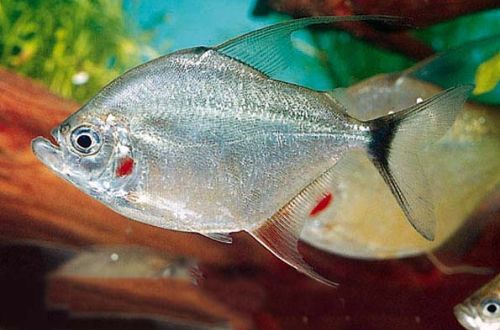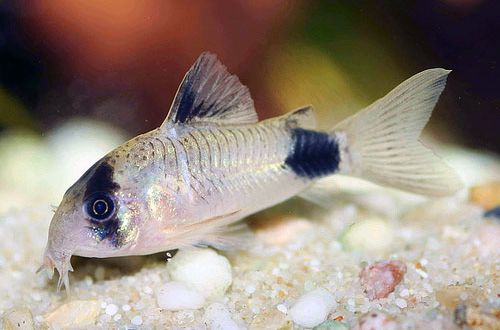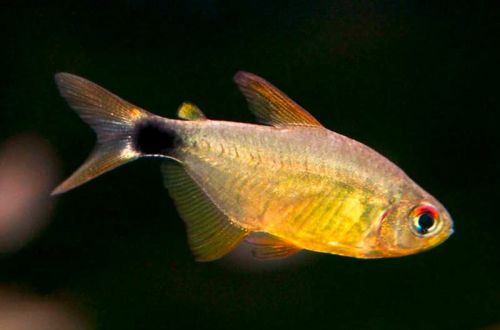
Pennant piranha
The pennant piranha, scientific name Catoprion mento, belongs to the Serrasalmidae (Piranha) family. Despite the name, it is not among the classic predatory piranhas, but is a closely related species. The word “mento” in the Latin name means “chin”, indicating the unusual structure of the mouth.

Contents
Habitat
Native to South America. It is found in almost all major river systems of the continent of the tropical belt. Inhabits the basins of the Amazon, Orinoco, Essequibo and upper Paraguay. It occurs in regions with dense aquatic vegetation, less often in open spaces, since in the absence of shelters it itself can become a victim of larger predators.
Brief information:
- The volume of the aquarium – from 150 liters.
- Temperature – 22-28°C
- Value pH — 5.8–6.5
- Water hardness – 1–5 dH
- Substrate type – any
- Lighting – subdued
- Brackish water – no
- Water movement – light or moderate
- The size of the fish is about 15 cm.
- Nutrition – protein products
- Temperament – aggressive
- Keeping alone in small aquariums
Description
Adult fish reach a length of about 15 cm. The body is high, disc-shaped. A characteristic feature of the species is the lower jaw extended forward. Unlike other relatives, the Pennant piranha has clearly visible differences between male and female. Males are distinguished by a greatly elongated first ray of the anal fin, for which they were nicknamed “pennant”.

Young fish are mostly silver. With age, the color darkens, gray tones begin to predominate, and pale red shades appear on the abdomen. In the body pattern there is a bright red spot behind the gill cover.
Maintenance and care, arrangement of the aquarium
It belongs to the territorial species, an active swimmer, therefore it needs a spacious aquarium with a length of at least 100 cm and a volume of 150 liters for one fish. In the design, it is necessary to provide places for shelters, which can be natural decorative elements, such as stones, driftwood and thickets of plants.
The optimum medium is soft slightly acidic water. Given the predatory lifestyle and the appropriate diet, a large load falls on the filtration system. It is recommended to use an external filter. Regular waste disposal (feed residues and excrement) is essential in maintaining high water quality.
Food
In nature, they feed on other fish, amphibians, various invertebrates, almost everything that they can catch. It is also noted that they feed on the scales of other fish, in which they are helped by the structure of the mouth, with an elongated lower jaw.
In a home aquarium, the food that the Pennant piranha has been accustomed to by breeders should be served. As a rule, these are not live fish, but pieces of shrimp, mussels, fish fillets.
Serve poultry and animal meat (bacon, beef) is not recommended. Although piranhas are able to eat such food, in nature it is not the basis of the diet, therefore it is much less digestible than the same shrimp.
Behavior and Compatibility
Juveniles strive to stay in a flock, but as they grow older they become loners. Adult fish should not be kept in groups. Females show the greatest aggression towards relatives. Any small fish will be eaten or injured. As aquarium neighbors, only large representatives of catfish, such as Flathead catfish and Armored catfish, should be considered.





